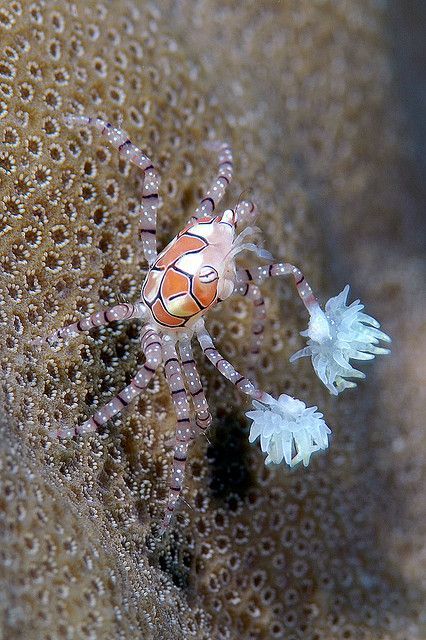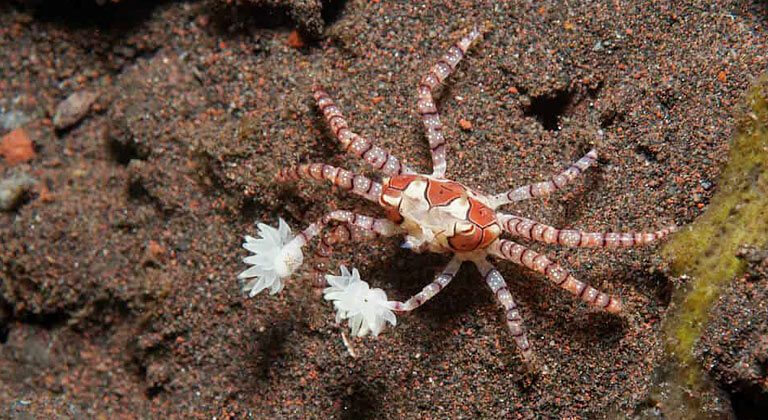The Pom Pom Crab, also known as the Soft Coral Crab, is a species of small marine crab that belongs to the family Xanthidae. They are found in the tropical waters of the Indo-Pacific region, particularly around the coral reefs.
One of the most distinctive features of the Pom Pom Crab is the two sea anemones of white or yellowish bristles that extend from its claws. These anemones, also known as “pom poms,” are used by the crab to camouflage itself among the soft coral that it inhabits. The Pom Pom Crab has a flattened, oval-shaped body that can grow up to 2.5 cm in width.
Pom Pom Crabs are opportunistic feeders, and they will eat a variety of small invertebrates, such as zooplankton, small crustaceans, and gastropods. They are also known to feed on the tentacles of the soft coral that they live in, but they are not considered to be harmful to the coral.

Pom Pom Crabs reproduce sexually, with the female carrying fertilized eggs under her abdomen until they hatch into larvae. The larvae are planktonic, meaning they float in the ocean currents until they settle on the ocean floor and develop into juvenile crabs.
In addition to their sea anemones, Pom Pom Crabs are also known for their unique way of fighting. When two crabs come into contact, they will extend their claws and use their sea anemones to push against each other, attempting to knock their opponent off balance. This behavior is known as “pom pom fighting.”
Pom Pom Crabs have been known to form symbiotic relationships with certain species of soft coral and sea anemones. In these relationships, the crab protects the coral or anemone from predators while also receiving shelter and food from them.

In a study published in 2017 by researchers at James Cook University in Australia found that Pom Pom crabs will indeed steal sea anemones from other crabs if they are unable to find their own. The researchers observed the behavior in the wild and in laboratory experiments, and found that the crabs were successful in stealing anemones from other crabs in over 70% of cases. This behavior is thought to be an adaptation that allows the Pom Pom crabs to maintain their symbiotic relationships with the sea anemones, even in situations where they are unable to find a suitable partner on their own.
Currently, the Pom Pom Crab is not considered to be endangered. However, like many marine species, it is vulnerable to habitat destruction and pollution. The destruction of coral reefs due to climate change and human activities such as overfishing and pollution could have a negative impact on Pom Pom Crab populations in the future.
It is important to protect the marine environments where these crabs and their symbiotic relationships with sea anemones live to ensure their survival and the health of the marine ecosystem as a whole.


